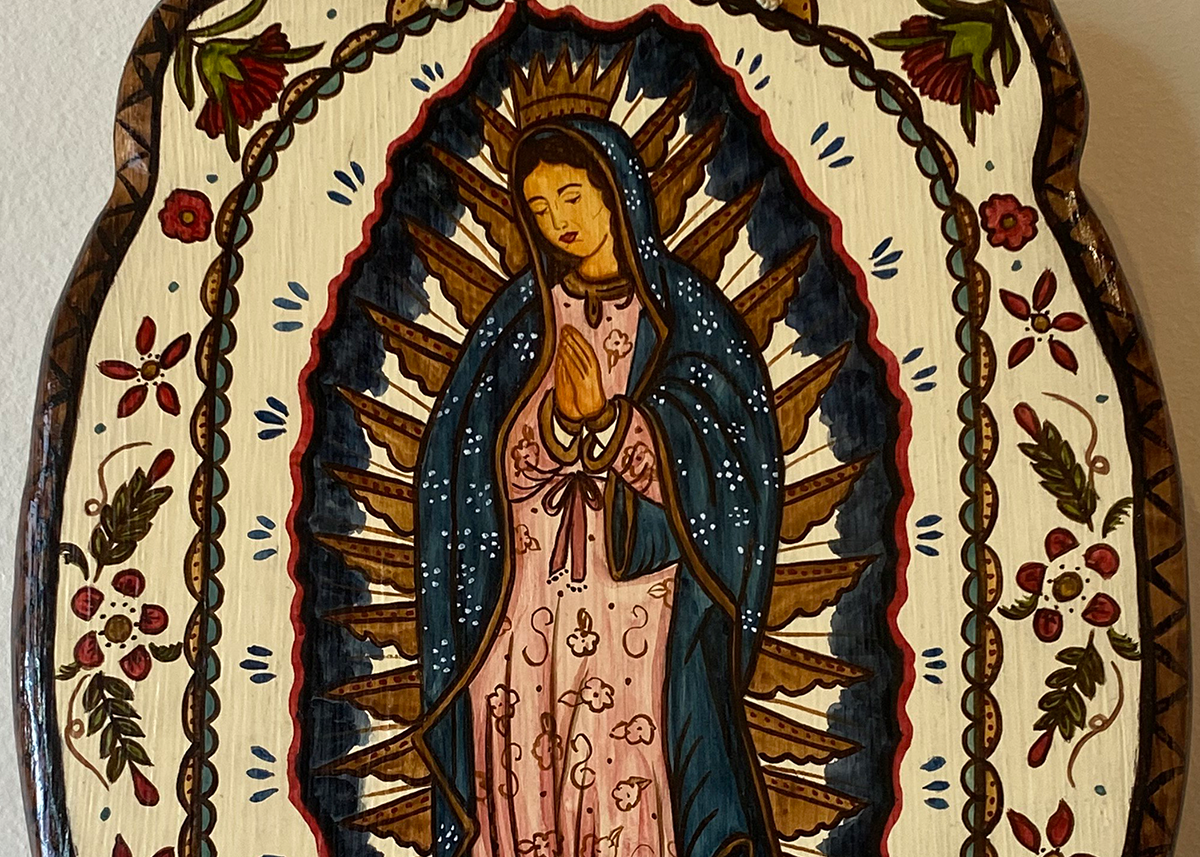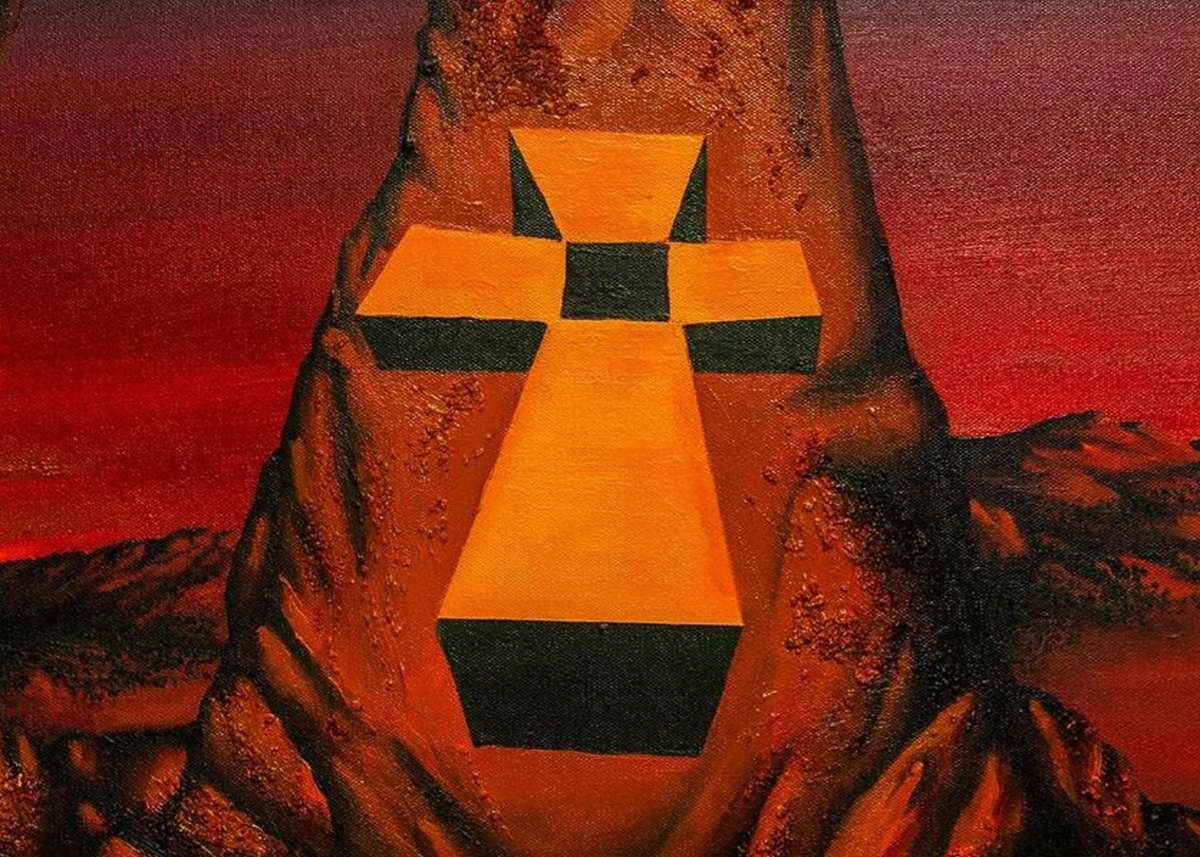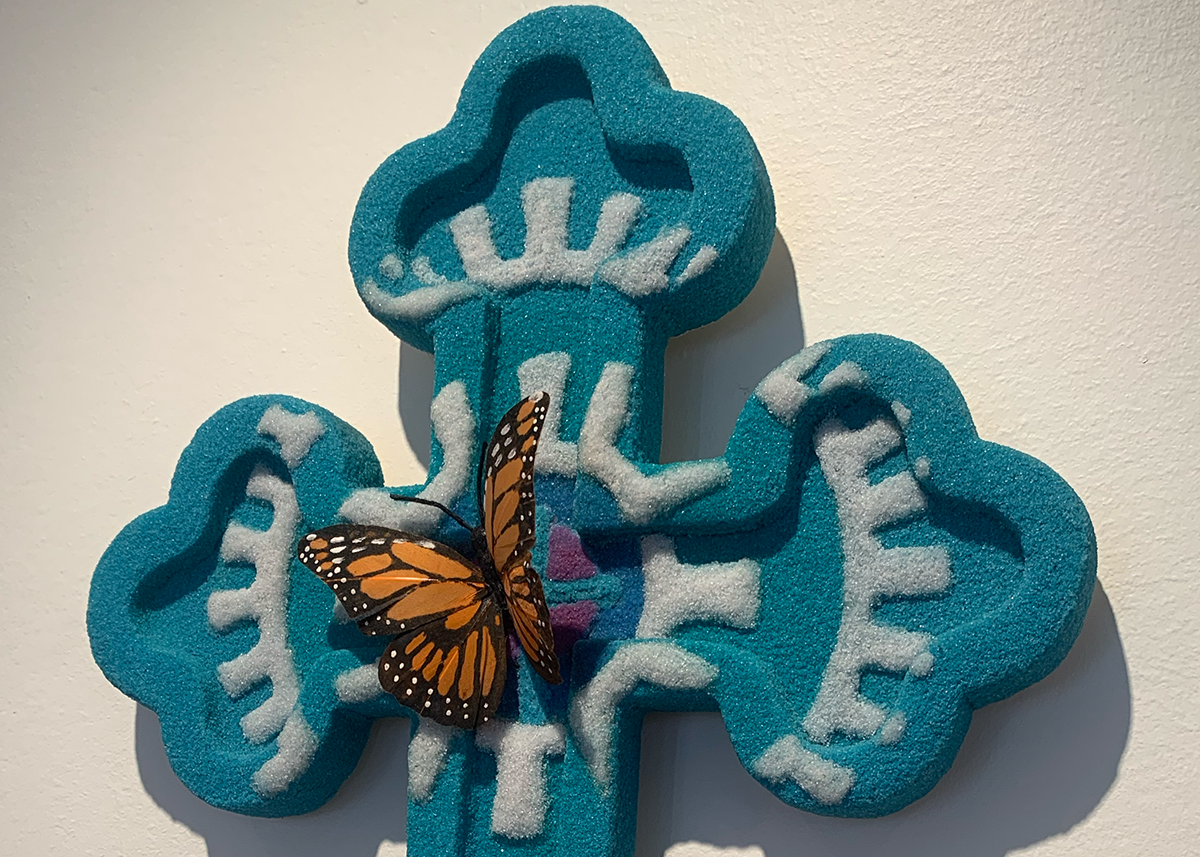
Courtesy of CHAC

Audio By Carbonatix
In the 1700s, artists in northern New Mexico began carving wooden saints or santos, along with a wide variety of other subjects from their Catholic faith. These icons represent the oldest non-Indigenous folk-art tradition in America: By the time the United States formed, artisans within the Spanish Empire had been creating santos in the Southwest for decades.
Witness the way that contemporary creatives are keeping the art of crafting santos alive in Santos Is Art in Celebration of Our Heritage, a new exhibit from the Chicano Humanities and Arts Council. The display, which is on view from December 6 through 22 at 834 Santa Fe Drive, is presented by CHAC and curated by Carlos Santistevan, one of the medium’s most notable modern santeros, or makers. For Santistevan, who was also a key figure in Denver’s Crusade for Justice (part of the larger Chicano Movement), the santos represent a vital thread of Chicana/o/x identity.
Santos Is Art has a diverse and vibrant array of works falling within the genre’s two main types: bultos, painted or unpainted sculptures made of wood; and retablos, devotional paintings created on wood or animal hide. Artists in the show are Gayedine Bujanda, Jamie Chihuan, Colleen Corrigan, Lucio Duran, Teresa Duran, Carlos Frésquez, Lynn Frésquez, Anthony LaCombe, Ambra Martinez, Joe Martinez and Cheryl Soltis. Subjects presented are drawn from santos art’s traditional subjects, including Catholic saints, Christ crucified and the Virgin Mary, or Our Lady of Refuge. Curator Santistevan explains that although the setting may be modern, the santos genre is still art with a purpose.

Jamie Chihuan’s “Buried Under the Crossroads.”
Courtesy of CHAC
“This is not the venue for just any art,” he says. “This is liturgical. This is religious. … As an artist, you can do what you feel like you want to do, but this is liturgical, and I have to keep it as pure as possible to show our ancestors that we appreciate what they preserved for us.”
The santeros of centuries past weren’t just showing off the creatives’ painstaking craftsmanship. They were building a connection with the divine. In the Roman Catholic faith, the Holy Saints are God’s helpers. If you prayed to them, they might intercede on your behalf, to provide favorable weather, or by sending a suitor for your daughter. The wooden santos acted as the physical avatars of this process. Although icons had been created for this purpose for many years in Spain and Mexico, Nueva Mexico’s position on the edges of the Spanish frontier meant that importing the “official” versions was too expensive for most, inspiring locals to create their own.
Santos Is Art‘s religious inspiration doesn’t preclude beauty or creativity, which are in abundance at the show. There are several breathtakingly vivid and traditional representations of the Holy Mother, but they’re complemented by a monochrome rendition from Lucio Duran that veers into the abstract in a way that recalls the work of Keith Haring. Ornate carved crucifixes share the walls with a more ambiguous version displayed in Jamie Chihuan’s vibrant painting “Buried Under the Crossroads.” The contemporary cast and touches are part of the message: For those in the Chicanx and Latinx communities, the santos genre is not a historical artifact, but a living art form.

A decorated cross from Santos Is Art in Celebration of Our Heritage.
Courtesy of CHAC
Santero Santistevan could be called a living legend. A contemporary of Rodolfo “Corky” Gonzales in El Movimiento, he was instrumental in founding CHAC, which has been a home for Denver’s Chicano art and community since 1978. After valiantly battling the city’s rents since the pandemic, the organization is currently thriving with two gallery spaces in the metro area (it’s opening another exhibit on December 6, Honoring Our Lady of Guadalupe and Tonantzin, at its Lakewood location); both are free.
After sidestepping into an art career during his time at the Emily Griffith Opportunity School (where he made his first sculpture to teach welding), Santistevan also opened the very first Chicano art gallery in the United States, El Grito Gallery. Long a fixture at Santa Fe’s Traditional Spanish Market, his work is also in the Denver Art Museum, the Smithsonian American Art Museum and even the Vatican. In his ninth decade, he is impressively energetic, as well as rebuffing our use of the “L” word.
“I don’t know if I’m a legend,” he says, laughing. “I’ve been called a lot of things, but that’s the first time I’ve been called a legend.”

Retablo from Santos Is Art in Celebration of Our Heritage.
Courtesy of CHAC
The artist has been fascinated by santos art for nearly half a century. After he began to make trips to the Spanish Market in the ’70s, he was introduced to its history, which had been mostly dormant since the turn of the twentieth century. Doing more research, he discovered something else: He had an ancestor who had been involved in the practice over 200 years ago. “That’s how I started to do the santos of New Mexico,” he says, “and I was the only one that was doing it until, gosh, about 1990.”
Now the trailblazer is inviting other talents to join him in the divine conversation. It’s merely a continuation of the work he’s been doing in Denver since the 1960s, simply and with little fanfare.
“I went to Corky [at his first building] and I said, ‘Corky, I’d like to set up an art gallery. Can I have one of the rooms?’ And he said, ‘Pick up any room you want.’ And so we opened up the first Chicano art gallery in the United States in Denver in 1968.”
Santos Is Art in Celebration of Our Heritage runs from Friday, December 6, through Sunday, December 22, at the CHAC Gallery at 834 Santa Fe Drive. Opening night is Friday, December 6, from 5 to 9 p.m.